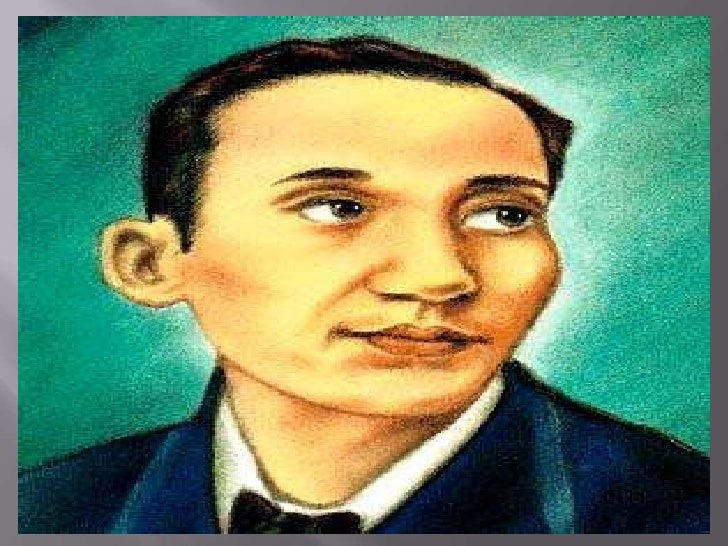KALUPI NG PUSO
Talaan ng aking mga dinaramdam,
Kasangguning lihim ng nais tandaan,
bawat dahon niya ay kinalalagyan
ng isang gunitang pagkamahal-mahal
Kaluping maliit sa tapat ng puso
ang bawat talata’y puno ng pagsuyo,
ang takip ay bughaw, dito nakatago
ang lihim ng aking ligaya’t siphayo.
Nang buwan ng Mayo kami nagkilala
at tila Mayo rin nang magkalayo na;
sa kaluping ito nababasa-basa
ang lahat ng aking mga alaala.
Nakatala rito ang buwan at araw
ng aking ligaya at kapighatian…
isang dapithapo’y nagugunam-gunam
sa mga mata ko ang luha’y umapaw…
Anupa’t kung ako’y tila nalulungkot
binabasa-basa ang nagdaang lugod;
ang alaala ko’y dito nagagamot,
sa munting kaluping puno ng himutok.
Matandang kalupi ng aking sinapit
dala mo nang lahat ang tuwa ko’t hapis;
kung binubuksan ka’y parang lumalapit
ang lahat ng aking nabigong pag-ibig.
Sa dilaw mong dahong ngayon ay kupas na
ang lumang pagsuyo’y naaalaala,
MANGGAGAWA
Bawat palo ng martilyo sa bakal mong pinapandayalipatong nagtilamsik, alitaptap sa kadimlan; mga apoy ng pawis mong sa Bakal ay kumikinangtandang ikaw ang may gawa nitong buong Santinakpan.Nang tipakin mo ang bato ay natayo ang katedralnang pukpukin mo ang tanso ay umugong ang batingaw,nang lutuin mo ang pilak ang salapi a lumitaw,si Puhunan ay gawa mo, kaya ngayon’y nagyayabang.
Kung may ilaw na kumisap ay ilaw ng iyong tadyang,
kung may gusaling naangat, tandang ikaw ang pumasan
mula sa duyan ng bata ay kamau mo ang gumalaw
hanggang hukay ay gawa mo ang krus na nakalagay.
Kaya ikaw ay marapat dakilain at itanghal
pagkat ikaw ang yumari nitong buong Kabihasnan…..
Bawat patak ng pawis mo’y yumayari ka ng dangal,
dinadala mo ang lahi sa luklukan ng tagumpay.
PUSO, ANO KA?
Ang
puso ng tao ay isang batingaw,
sa palo ng hirap, umaalingawngaw
hihip lang ng hapis pinakadaramdam,
ngumt pag lagi nang nasanay, kung minsan,
nakapagsasaya kahit isang bangkay.
Ang
puso ng tao’y parang isang relos,
atrasadong oras itong tinutumbok,
oratoryo’y hirap, minutero’y lungkot,
at luha ang tiktak na sasagot-sagot,
ngunit kung ang puso’y sanay sa himutok
kahit libinga’y may oras ng lugod.
Ang
puso ay ost’ya ng tao sa dibdib
sa labi ng sala’y may alak ng tamis,
kapag sanay ka nang lagi sa hinagpis
nalalagok mo rin kahit anung pait,
at parang martilyo iyang bawat pintig
sa tapat ng ating dibdib na may sakit.
Kung ano ang
puso? Ba, sanlibrang laman
na dahil sa ugat ay gagalaw-galaw,
dahil sa pag-ibig ay parang batingaw,
dahil sa panata ay parang orasan,
at mukhang ost’ya rin ng kalulwang banal
sa loob ng dibdib ay doon nalagay.
ISANG PUNUNGKAHOY
Kung tatanawin mo sa malayong pook,
ako’y tila isang nakadipang kurus;
sa napakatagal na pagkakaluhod,
parang ang paa ng Diyos.Organo sa loob ng isang simbahan
ay nananalangin sa kapighatian,
habang ang kandila ng sariling buhay
magdamag na tanod sa aking libingan.
Sa aking paanan ay may isang batis,
maghapo’t magdamag na nagtutumangis;
sa mga sanga ko ay nangakasabit
ang pugad ng mga ibon ng pag-ibig.
Sa kinislap-kislap ng batis na iyan,
asa mo ri’y agos ng luhang nunukal;
at saka ang buwang tila nagdarasal,
ako’y binabati ng ngiting malamlam.
Ang mga kampana sa tuwing orasyon,
nagpapahiwatig sa akin ng taghoy,
ibon sa sanga ko’y may tabing nang dahon,
batis sa paa ko’y may luha nang daloy.
Ngunit tingnan ninyo ang aking narating,
natuyo, namatay sa sariling aliw.
Naging kurus ako ng pagsuyong laing
at bantay sa hukay sa gitna ng dilim.
Wala na, ang gabi ay lambong na luksa,
panakip sa aking namumutlang mukha!
Kahoy na nabuwal sa pagkakahiga
ni ibon, ni tao’y hindi na matuwa.
At iyong isiping nang nagdaang araw,
isang kahoy akong malago’t malabay.
Ngayon, ang sanga ko’y kurus sa libingan,
dahon ko’y ginawang korona sa hukay!
SA PAMILIHAN NG PUSO
Huwag kang iibig nang dahil sa pilak
pilak ay may pakpak
dagling lumilipad
pag iniwan ka na, ikaw’y maghihirap.
Huwag kang iibig nang dahil sa ganda
ganda’y nagbabawa
kapag tumanda na
ang lahat sa mundo’y sadyang nag-iiba.
Huwag kang iibig sa dangal ng irog
kung ano ang tayog
siya ring kalabog
walang taong hindi sa hukay nahulog.
Huwag kang iibig dahilan sa nasang
maging masagana
sa aliw at tuwa
pagkat ang pag-ibig ay di nadadaya…
Kung ikaw’y iibig ay yaong gusto mo
at mahal sa iyo
kahit siya’y ano,
pusong-puso lainang ang gawin mong dulo.
Kung ikàw’y masawi’y sawi kang talaga
ikaw na suminta
ang siyang magbata;
kung maging mapalad, higit ka sa iba.
Sa itong pag-ibig ay lako ng puso
di upang magtubo
kaya sumusuyo
pag-ibig ay hukay ng pagkasiphayo.







 Many attempts have been made to define, classify, and describe the folktale. None of these attempts did a completely satisfactory job; the folktale is just too inclusive for such division. The term covers almost any traditional narrative, either oral or literary. Its diverse forms include legends and traditions, fairy tales, animal tales, fables, and of course myths.
Many attempts have been made to define, classify, and describe the folktale. None of these attempts did a completely satisfactory job; the folktale is just too inclusive for such division. The term covers almost any traditional narrative, either oral or literary. Its diverse forms include legends and traditions, fairy tales, animal tales, fables, and of course myths.